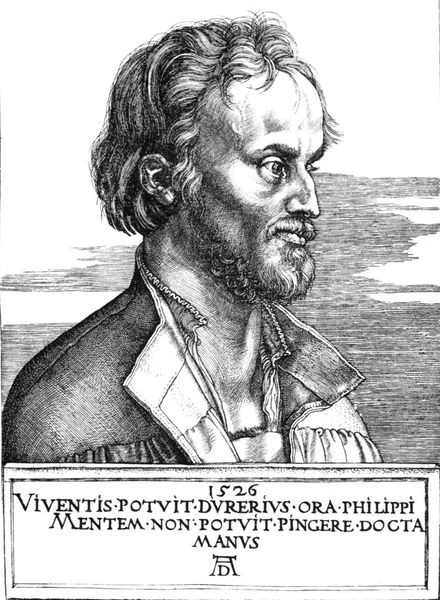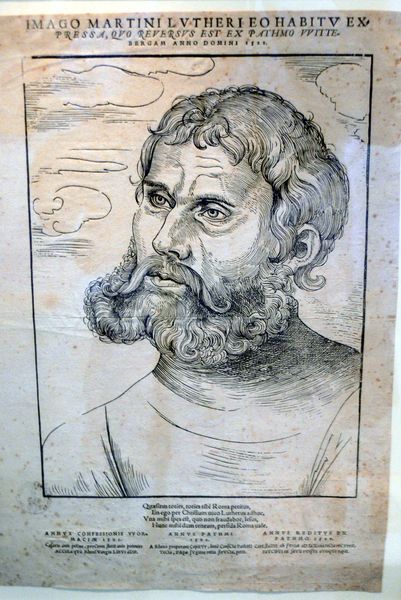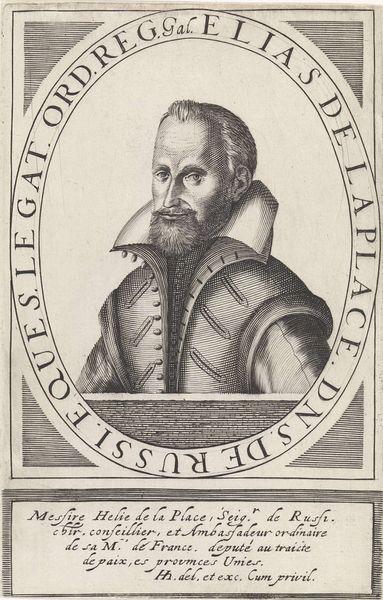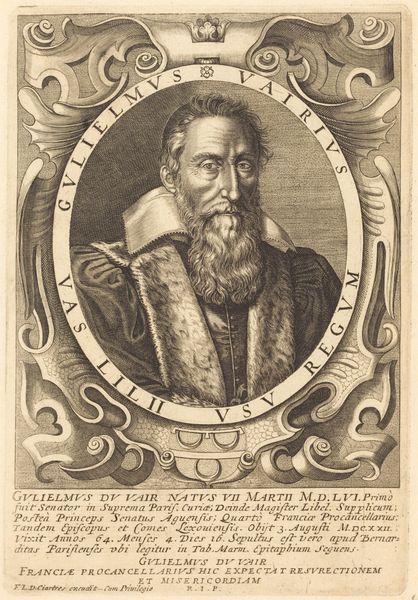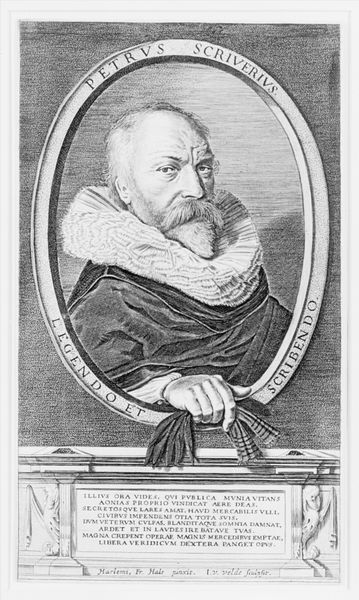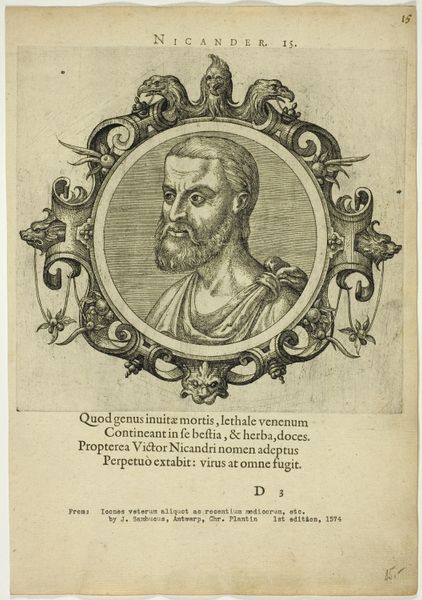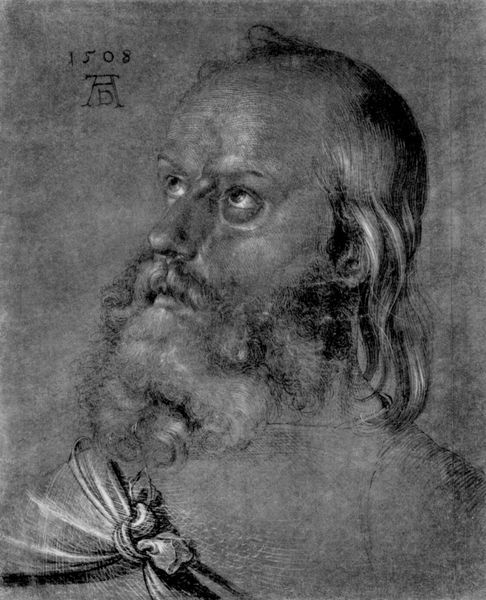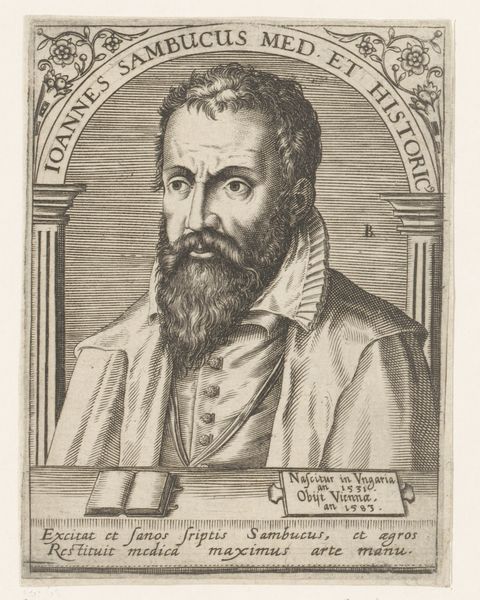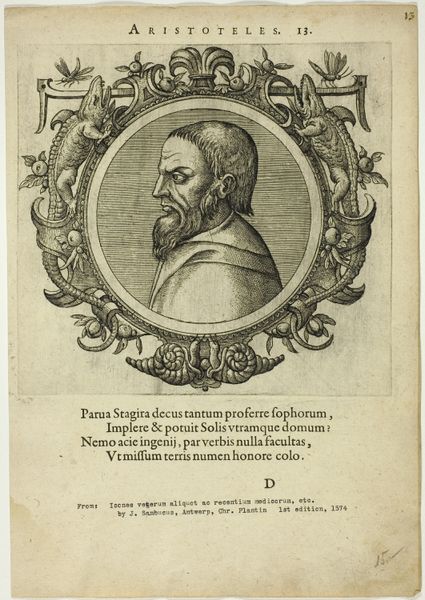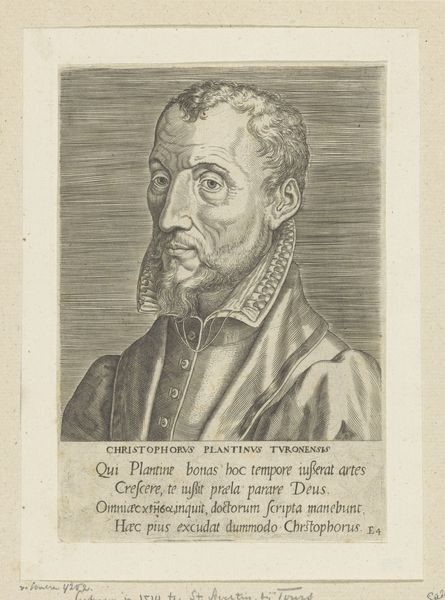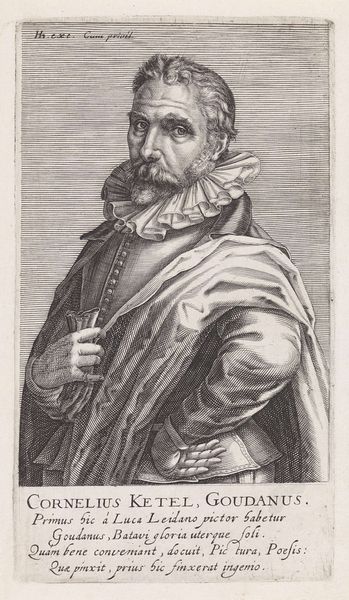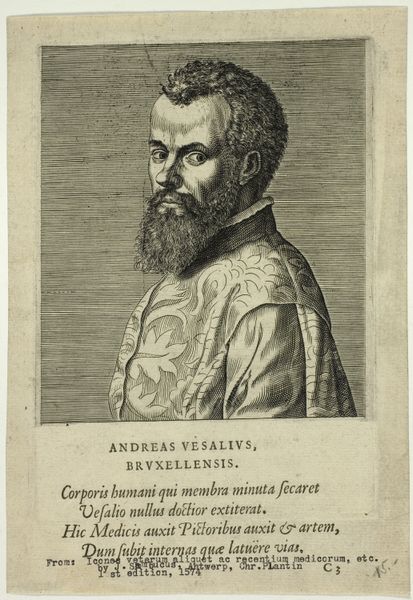
drawing, print, graphite, engraving
#
portrait
#
drawing
#
portrait
# print
#
11_renaissance
#
graphite
#
northern-renaissance
#
engraving
Copyright: Public domain
Editor: This is Albrecht Dürer’s "Portrait of Philipp Melanchthon" from 1526, created as an engraving. The subject's gaze is really intense. What historical layers should we consider when viewing this portrait? Curator: Beyond its aesthetic merit, this portrait becomes powerful when viewed through the lens of the Reformation and the rise of humanism. Dürer immortalizes Melanchthon, a key intellectual figure advocating for religious reform, but who was also known for, let’s say, taking the softer path to reform in light of figures such as Luther. How does Dürer’s work, do you think, intersect with and reflect this period of intense religious and social upheaval? Editor: So, it's less just a likeness and more of a statement? I mean, the Reformation was pretty turbulent, wasn't it? Curator: Precisely. Dürer, sympathetic to the Reform movement, uses his artistry to subtly champion figures who sought social change. How might the symbolism of this engraving—the sharp lines, the thoughtful gaze—contribute to constructing Melanchthon’s identity within this broader social narrative? Consider, for instance, that this engraving allowed for dissemination and circulation; therefore, portraiture becomes a strategy. What do you make of that? Editor: I see. By making the print, it’s not just for the elite, but can reach further, shaping perceptions about Melanchthon and, by extension, the Reform movement. Curator: Exactly! It places him and the movement firmly within the sphere of intellectual and, perhaps, spiritual authority. Reflect on the power of visual representation during periods of immense social transition and religious reformation, especially in solidifying identity. It prompts reflection on how such strategies translate into modern contexts, don’t you agree? Editor: Definitely. Thinking about portraits as arguments, and not just depictions, really changes how I see them. Thanks for shedding light on that! Curator: It was a pleasure! I leave with a greater sense of purpose knowing I was able to highlight the rich nuances of this artwork.
Comments
No comments
Be the first to comment and join the conversation on the ultimate creative platform.
